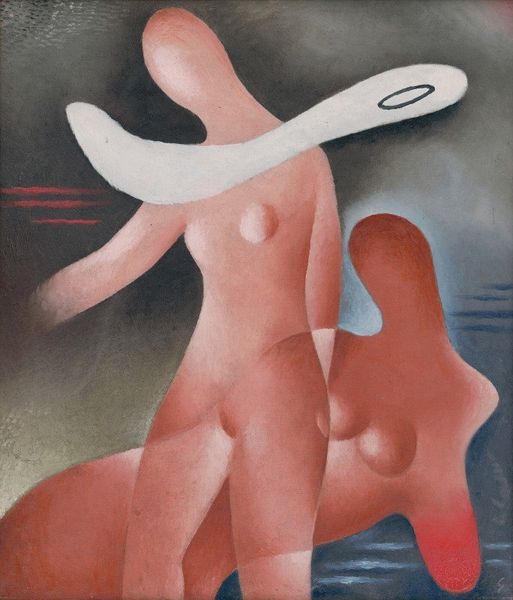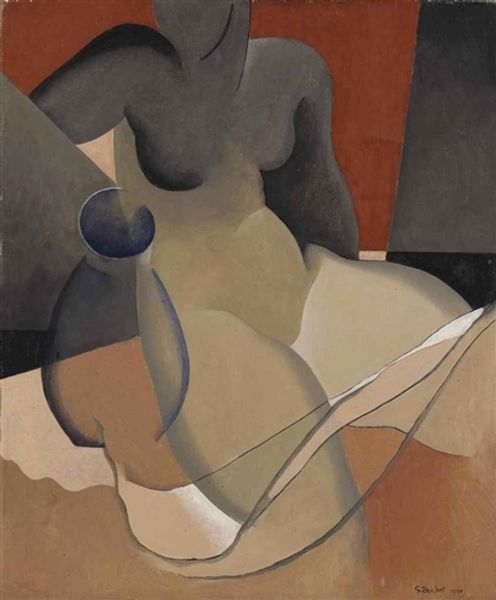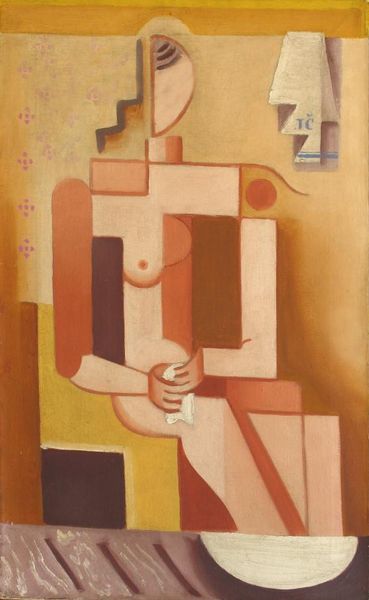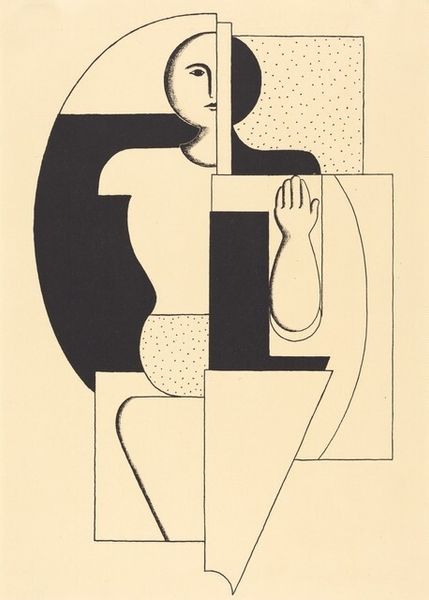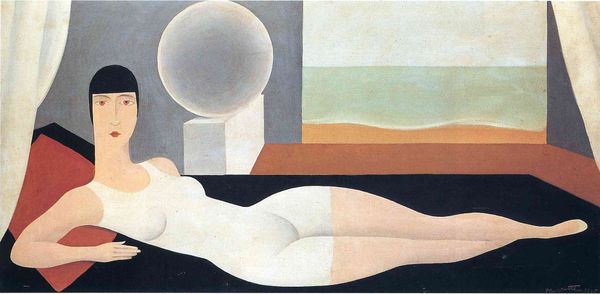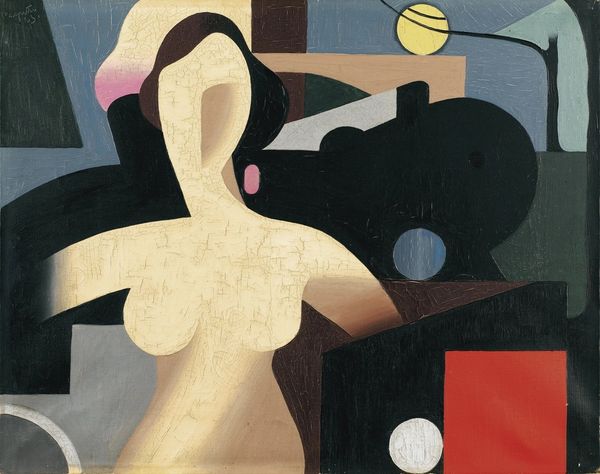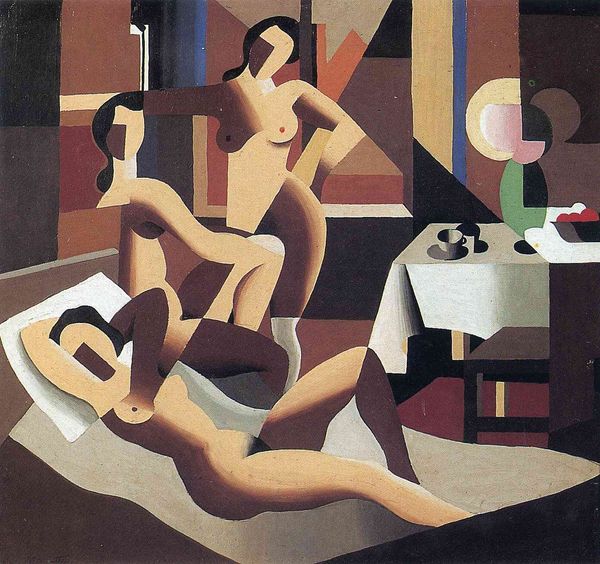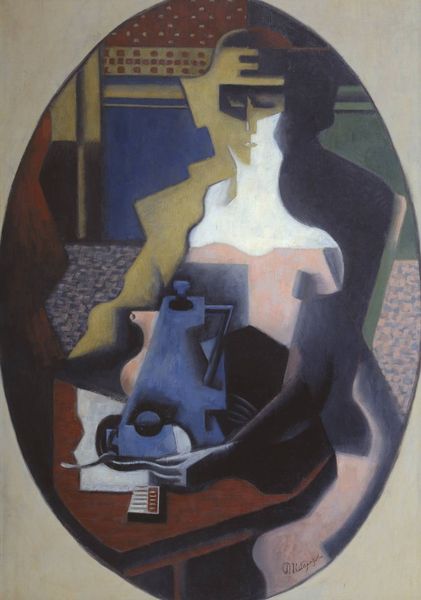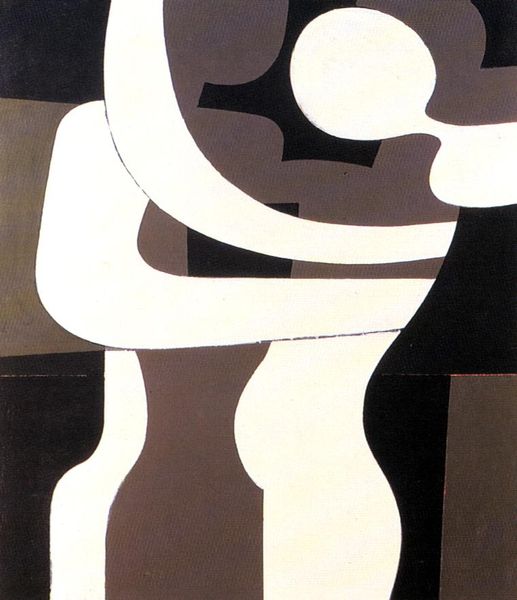
painting, oil-paint
#
cubism
#
painting
#
oil-paint
#
figuration
#
form
#
geometric
#
line
#
nude
#
modernism
Copyright: Willi Baumeister,Fair Use
Curator: Willi Baumeister's "Female Runner II" created around 1925, uses oil paint, showcasing the artist’s unique interpretation of the human form in motion. It’s a striking piece. Editor: Yes, striking! The pale nude figure dominating the foreground gives off this uncanny almost futuristic vibe against what appears to be a minimalist architectural backdrop, don’t you think? Curator: Absolutely, it represents the Modernist ambition of the era to depict speed and the changing perception of the human body. It relates to broader social preoccupations with athletic culture. Editor: The runner feels divorced from any natural environment, which, I guess, really speaks to that larger theme of humanity grappling with technological advancement during the interwar period. Is there commentary there, do you suppose? Curator: There may be. But it may also speak to the way that public spectacles such as sports allowed artists to display more traditionally forbidden imagery such as the nude, which had previously been forbidden. I also think that we can’t discount that these kind of themes allowed artist to more explicitly delve into geometry and form. Editor: So it was perhaps a subversive means of aesthetic exploration. How were such works generally received during the time, knowing they flirted with some traditionally "forbidden" zones, and considering broader audience demographics? Curator: The art world's reaction to works like these was divided. While avant-garde circles and critics embraced such expressions of modernity, the more traditional establishments were often critical. Public perception largely depended on class and exposure. Progressive audiences saw liberation; more conservative factions saw only impropriety. Editor: And this kind of division mirrors ongoing debates today around what art can and should represent. So it echoes forward too. Curator: Precisely. Looking back, it's vital to recognize Baumeister's artwork in a continuum that interrogates boundaries and prevailing views, contributing meaningfully to current conversations about representation. Editor: Agreed, seeing that echo highlights that art is in constant negotiation with power and the accepted cultural framework. Very interesting work. Curator: A fruitful exploration, definitely. Let's move to the next piece.
Comments
No comments
Be the first to comment and join the conversation on the ultimate creative platform.


